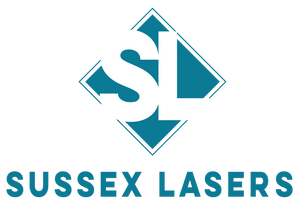Enabling Miniaturisation and Circuit Board Identification
In the fast-paced world of electronics manufacturing, precision, efficiency, and reliability are of paramount importance. As electronic devices become increasingly compact and complex, the need for accurate and durable marking solutions has never been greater. This is where laser marking technology shines, quite literally. In this blog post, we'll delve into the importance of laser marking in the electronics industry, particularly its role in enabling miniaturisation and circuit board identification with precision, durability, and readability.

The Importance of Precision in Electronics Manufacturing
In electronics manufacturing, every component, no matter how small, plays a crucial role in the functionality and performance of the final product. Just like a mechanical clock from the old days, if one small cog isn’t working, the whole device will fail. As devices become smaller and more intricate, the ability to mark components with precision becomes essential. Laser marking technology offers unparalleled precision, allowing manufacturers to apply markings with micron-level accuracy. This precision is particularly valuable when marking tiny electronic components, such as integrated circuits, microchips, and connectors, without causing damage to them or affecting their functionality.
Durability and Longevity
Electronic devices are subjected to a variety of environmental conditions, including temperature fluctuations, moisture, and mechanical stress. As a result, markings applied to electronic components must be durable and resistant to wear and tear. Laser marking offers exceptional durability, as it creates permanent markings by altering the surface properties of the material itself. Unlike traditional marking methods such as inkjet printing or labelling, laser markings are resistant to abrasion, fading, and chemical exposure, ensuring that vital information remains legible throughout the product's lifecycle.
Enhanced Readability and Traceability
In addition to precision and durability, laser marking technology enables enhanced readability and traceability of electronic components. By applying high-resolution markings with crisp edges and fine details, manufacturers can incorporate a wealth of information into small spaces, including serial numbers, barcodes, date codes, and logos. These markings allow accurate identification and tracking of components throughout the manufacturing process, supply chain, and product lifecycle. Furthermore, laser-marked codes and identifiers can be easily scanned and read by automated systems, improving efficiency and reducing the risk of errors.
Enabling Miniaturisation and Space Optimisation
Miniaturisation is a defining trend in electronics design, driven by the demand for smaller, lighter, and more portable devices. Laser marking plays a crucial role in enabling miniaturisation by providing a non-invasive method for marking components and circuit boards with precision in confined spaces. With laser marking technology, manufacturers can apply markings to tiny components and intricate surfaces without compromising size or performance. This allows for greater design flexibility and space optimisation, ultimately leading to more compact and innovative electronic devices.
In conclusion, laser marking technology plays a vital role in the electronics industry by enabling miniaturisation and circuit board identification with precision, durability, and readability. From marking microscopic components to facilitating traceability and space optimisation, laser marking offers a versatile and reliable solution for the demanding requirements of modern electronics manufacturing. Here at Sussex Lasers, we have the machinery and experience to laser mark an impressive range of materials and components, no matter how small or intricate. As the electronics industry continues to evolve, laser marking will remain an indispensable tool for ensuring quality, efficiency, and innovation in electronic device production.

